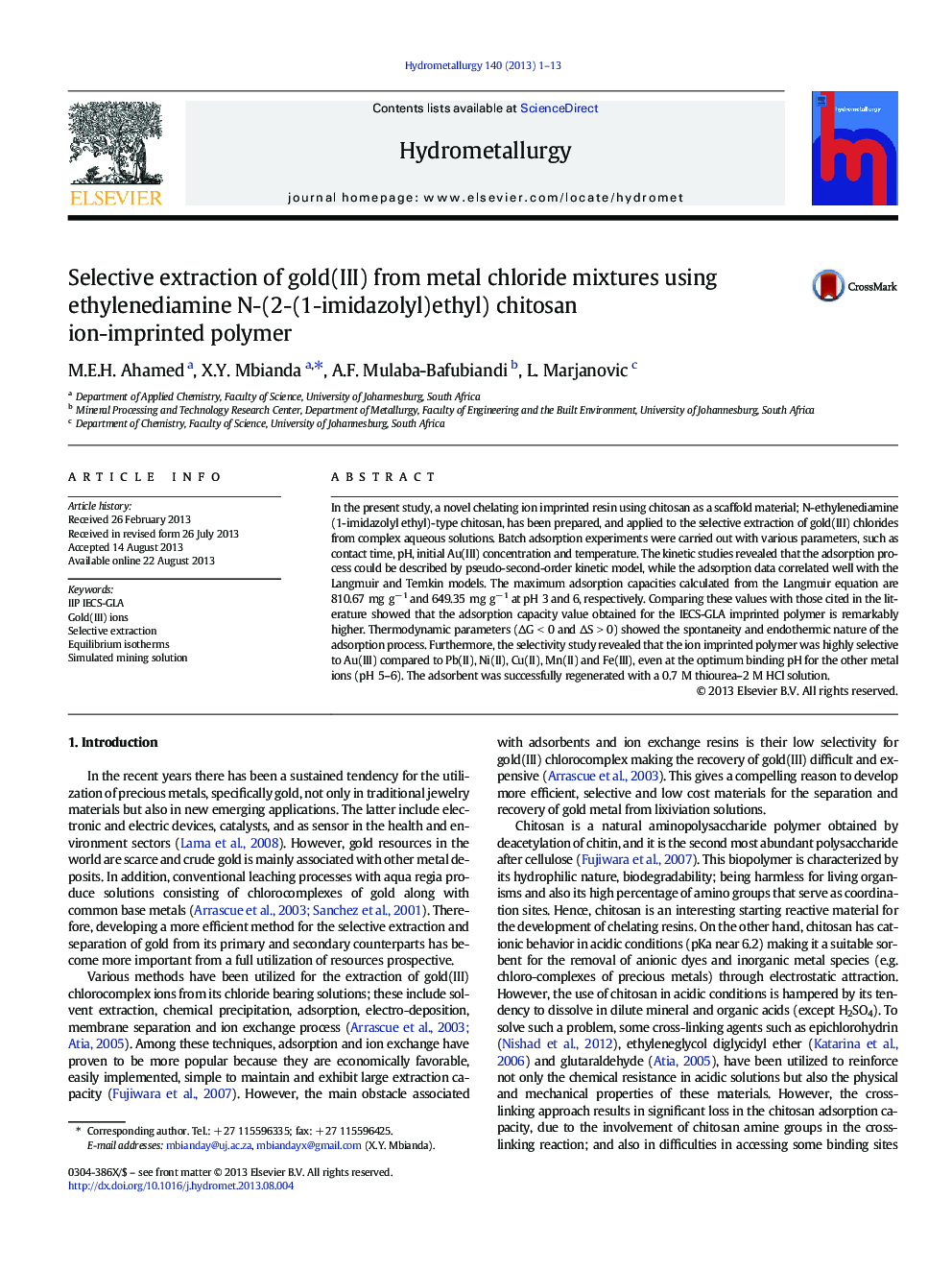| Article ID | Journal | Published Year | Pages | File Type |
|---|---|---|---|---|
| 212294 | Hydrometallurgy | 2013 | 13 Pages |
•Synthesis of new gold(III) ion imprinted polymer (IIP) materials•With outstanding selectivity and adsorption capacity•Perform better than most of the existing gold(III) adsorption materials•Suitable for adsorption online (short contact time)•Selectivity and adsorption capacity are not lost upon regeneration
In the present study, a novel chelating ion imprinted resin using chitosan as a scaffold material; N-ethylenediamine (1-imidazolyl ethyl)-type chitosan, has been prepared, and applied to the selective extraction of gold(III) chlorides from complex aqueous solutions. Batch adsorption experiments were carried out with various parameters, such as contact time, pH, initial Au(III) concentration and temperature. The kinetic studies revealed that the adsorption process could be described by pseudo-second-order kinetic model, while the adsorption data correlated well with the Langmuir and Temkin models. The maximum adsorption capacities calculated from the Langmuir equation are 810.67 mg g− 1 and 649.35 mg g− 1 at pH 3 and 6, respectively. Comparing these values with those cited in the literature showed that the adsorption capacity value obtained for the IECS-GLA imprinted polymer is remarkably higher. Thermodynamic parameters (∆G < 0 and ∆S > 0) showed the spontaneity and endothermic nature of the adsorption process. Furthermore, the selectivity study revealed that the ion imprinted polymer was highly selective to Au(III) compared to Pb(II), Ni(II), Cu(II), Mn(II) and Fe(III), even at the optimum binding pH for the other metal ions (pH 5–6). The adsorbent was successfully regenerated with a 0.7 M thiourea–2 M HCl solution.
